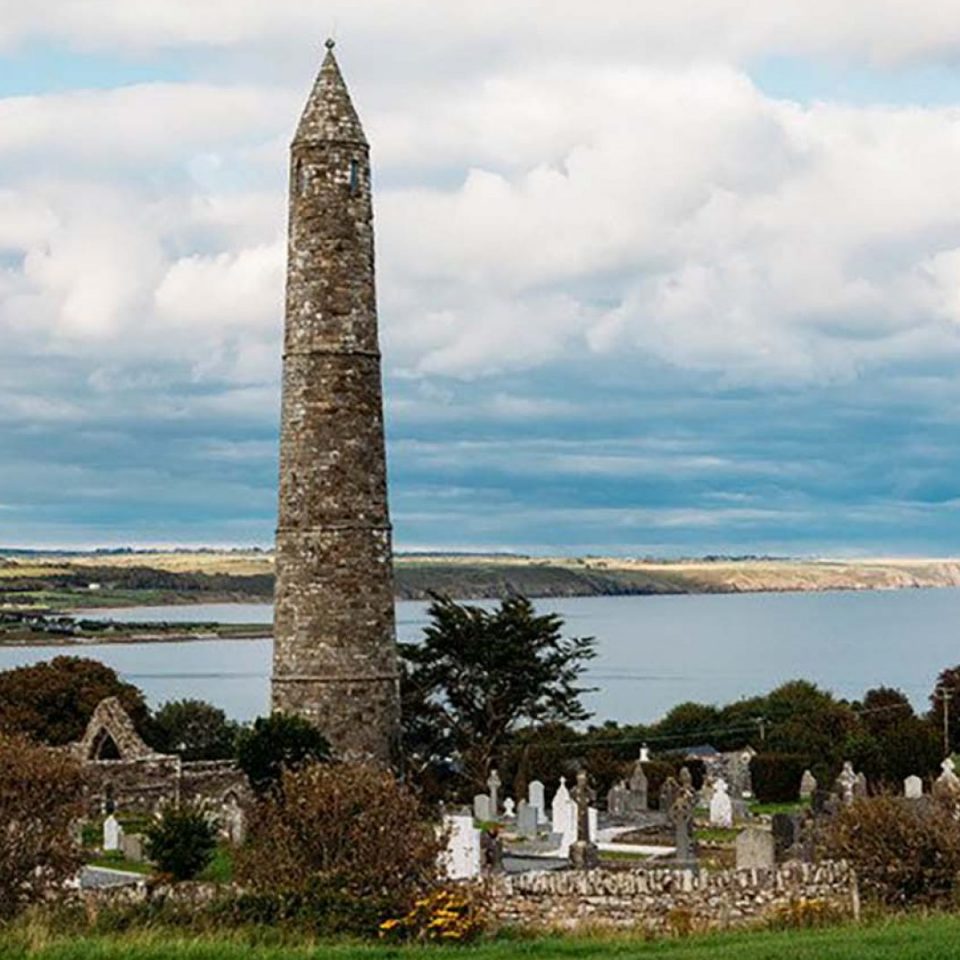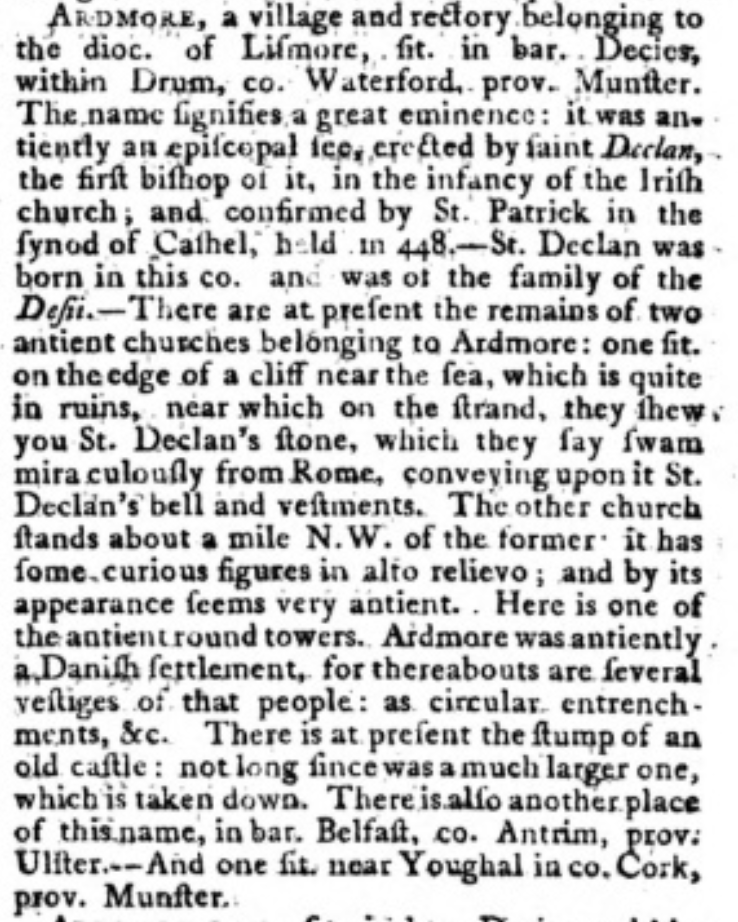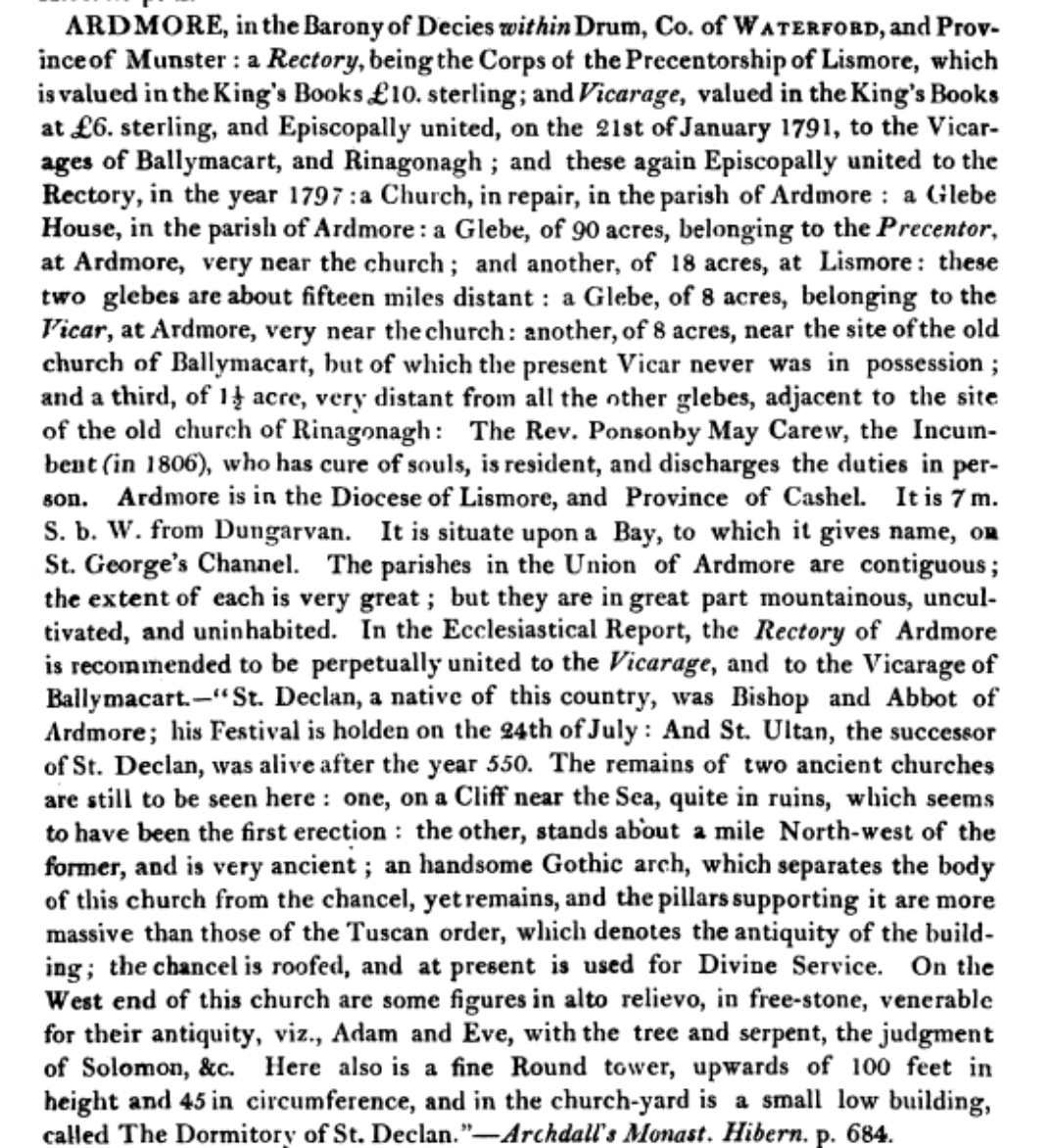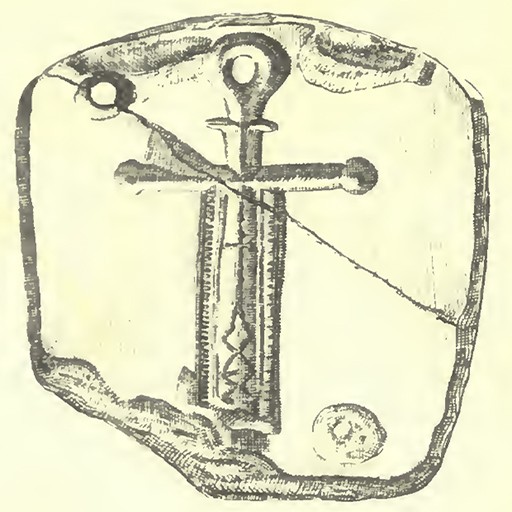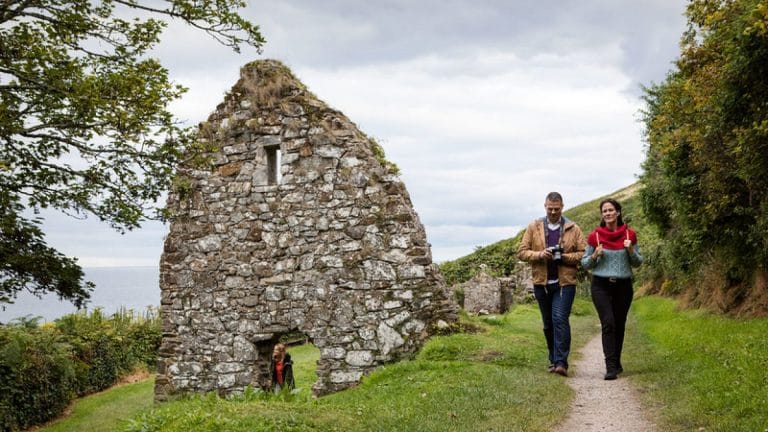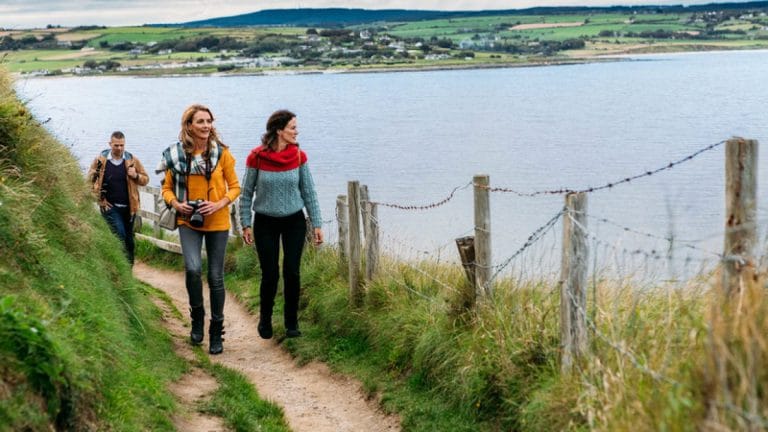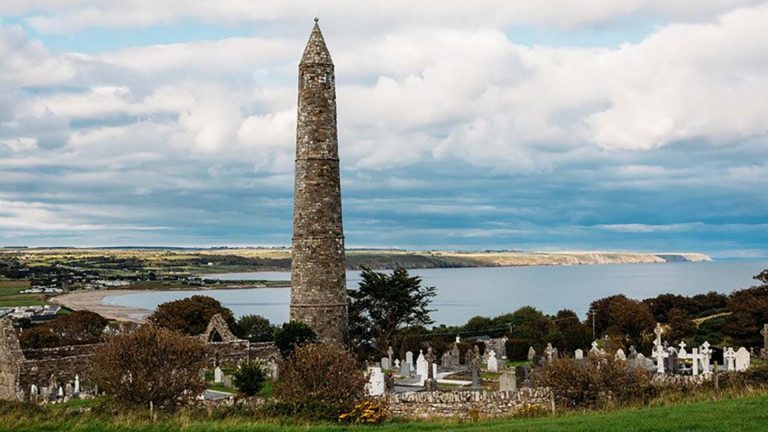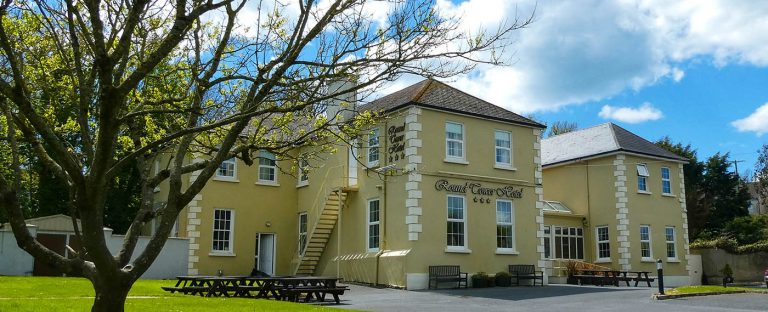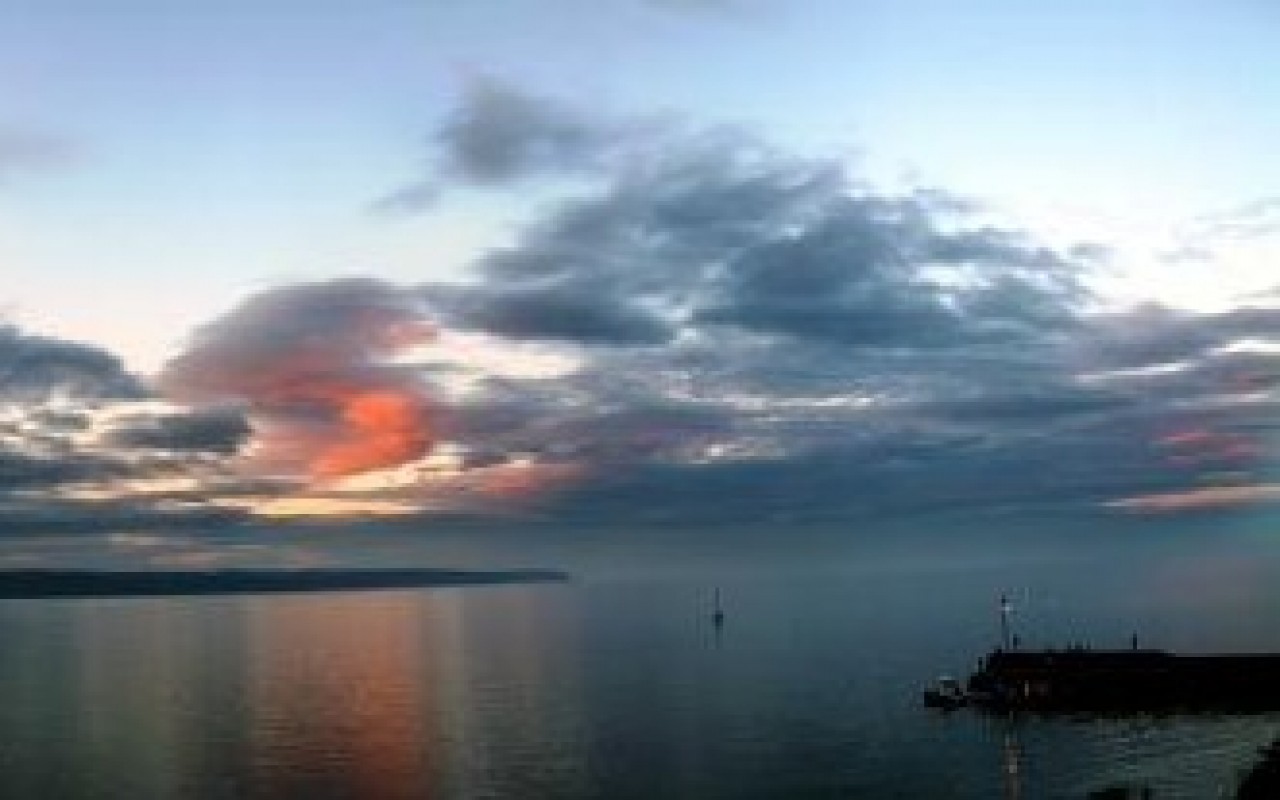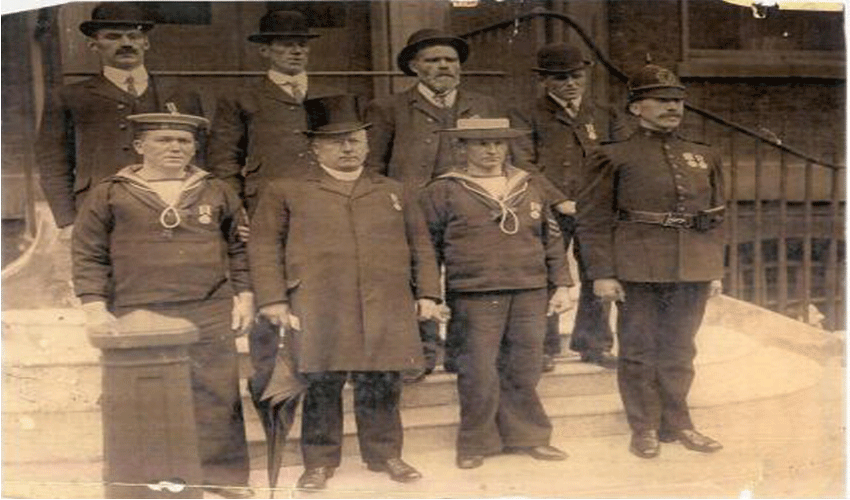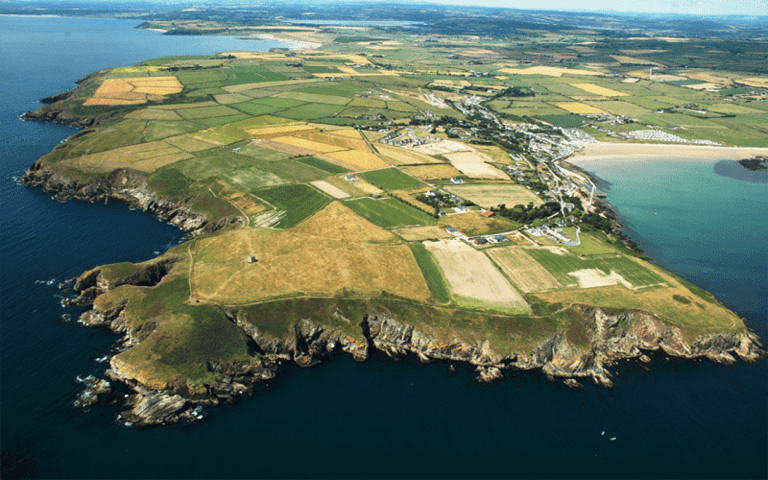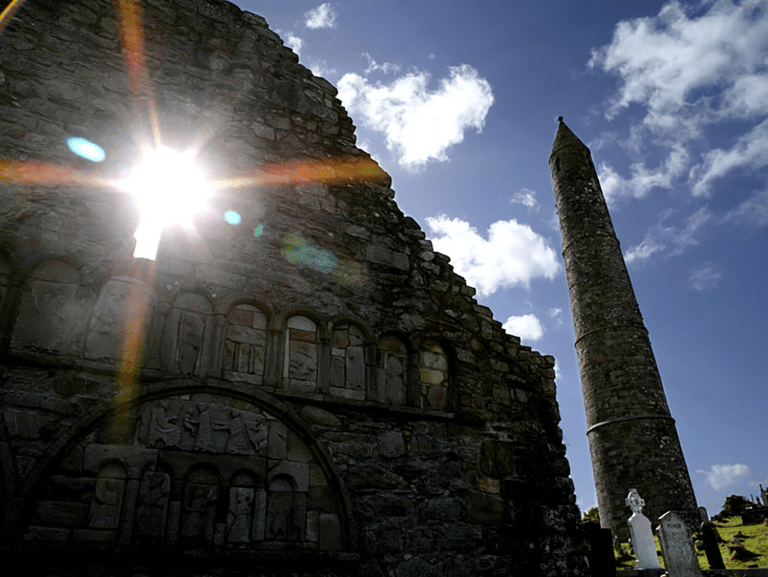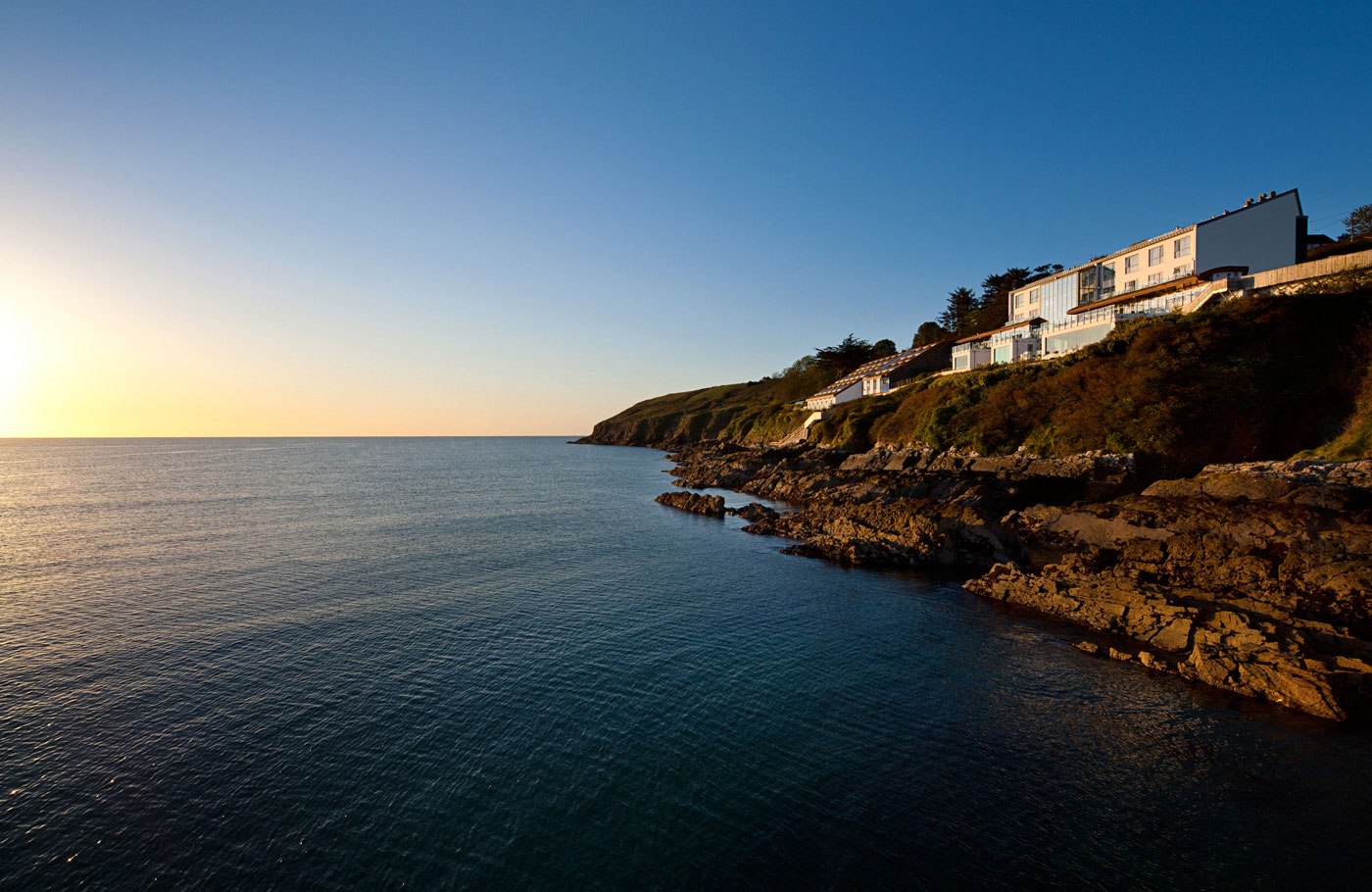Nestled on the rugged coast of County Waterford, Ardmore stands as a living testament to Ireland’s rich history and enduring spirituality. This picturesque seaside village, whose name “Aird Mhór” means “great height” in Irish, holds the distinction of being Ireland’s oldest Christian settlement[4][5].
A Saint’s Legacy
Step back in time to the 5th century, when Saint Declan arrived in this scenic spot, predating even Saint Patrick’s mission to Ireland. Legend has it that Declan established his monastery here between 350-450 AD, planting the seeds of Christianity that would flourish for centuries [2][5].
Echoes of Ancient Glory
As you wander through Ardmore, you’ll encounter awe-inspiring remnants of its storied past:
- The magnificent Round Tower: Standing 30 meters tall, this 12th-century marvel is one of Ireland’s best-preserved examples[2].
- The Cathedral: Once the heart of a thriving diocese, it tells the tale of Ardmore’s ecclesiastical importance[3].
- St. Declan’s Oratory: A primitive stone church that whispers secrets of early Irish Christianity[3].
From Bishopric to Village
Ardmore’s influence once extended far beyond its shores. In 1111, the Synod of Rathbreasail recognized it as a diocese. Imagine the pomp and ceremony in 1171 when Ardmore’s bishop swore fealty to King Henry II of England[5]. However, by 1210, references to an independent bishop of Ardmore faded into history, marking the end of an era[5].
A Tapestry of Traditions
The village’s spiritual legacy lives on through vibrant traditions:
- St. Declan’s Feast Day: On July 24th, thousands of pilgrims still flock to Ardmore, echoing gatherings that once drew up to 14,000 faithful in 1847[6].
- Ancient holy wells: Sites of devotion that have quenched spiritual thirst for centuries[3].
More Than Just History
Today, Ardmore seamlessly blends its rich past with modern charm:
- A thriving seaside resort and fishing village with a population of 468 (as of 2022)[5].
- Home to the Michelin-starred restaurant “The House” at the Cliff House Hotel[5].
- Recognized as one of Ireland’s top tourist destinations by Fáilte Ireland in 2014[4][5].
As you explore Ardmore’s winding streets and breathtaking coastal paths, remember that you’re walking in the footsteps of saints, kings, and countless pilgrims drawn to this “great height” for over 1,500 years. In Ardmore, every stone has a story, and every view is a window into Ireland’s soul.
Citations:
[1] http://snap.waterfordcoco.ie/collections/ebooks/95153/95153.pdf
[2] https://myrealireland.com/waterford/ardmore-county-waterford/
[3] https://www.ardmorewaterford.com/placenames-of-ardmore-waterford/
[4] https://kids.kiddle.co/Ardmore,_County_Waterford
[5] https://en.wikipedia.org/wiki/Ardmore,_County_Waterford
[6] https://www.ardmorewaterford.com/the-parish-of-ardmore-and-grange-1912/
[7] https://www.waterfordmuseum.ie/exhibit/web/Display/category/1/2/3/5/
[8] https://www.waterfordvisitorcentre.com/blog/travel-guide-ireland/historic-surroundings-ardmore
The Compact History Of Ardmore On The Amazing Ireland’s Ancient East
If you’ve been exploring Ireland’s Ancient East, you’ve discovered there’s never a dull moment when visitors start to unpick history. When you arrive in Ardmore, you’ll be spoilt for choice.
This is a site where stories are shared about Ardmore. Some stories come from visitors, others from those who have called Ardmore home for their entire lives.
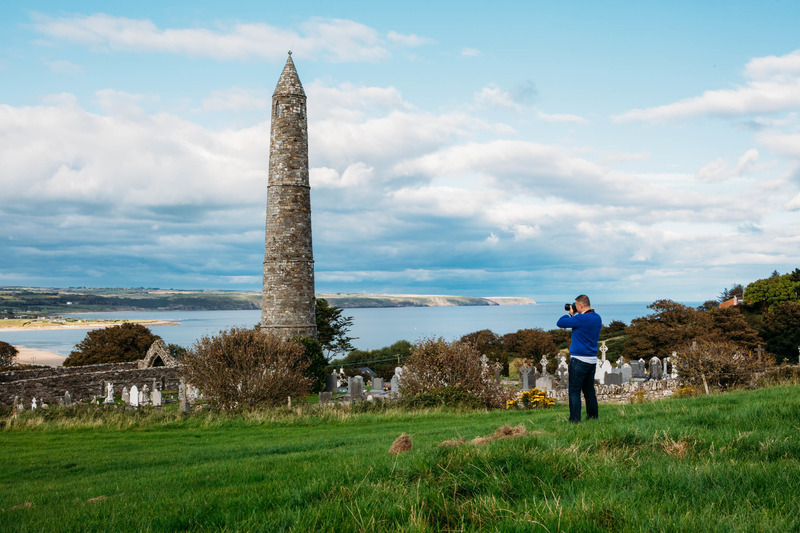
Here are two reports that we particularly like from the start of the 1800s.
Here is a short extract by Wm. Wenman Seward, Esq. in 1797. It is taken from “The topography of Ireland, ancient and modern. Giving a complete view of the civil and ecclesiastical state of that kingdom; with its antiquities, natural curiosities, trade, manufactures, extent, and population.”
We also include an extract from 1810 taken from
A topographical dictionary of Ireland: exhibiting the names of the several cities, towns, parishes, and villages … Collected from the most authentic documents, and arranged in alphabetical order: being a continuation of the topography of the United Kingdom of Great Britain and Ireland / by Nicholas Carlisle, Fellow and Secretary of The Society of Antiquaries of London.
